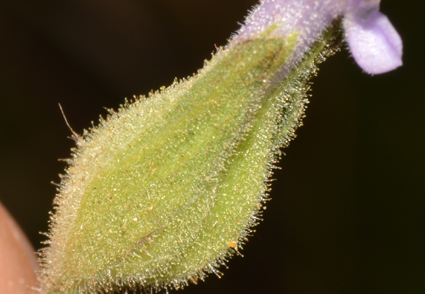Abstract
Oocephalus foliosus was described in the first half of 19th century, based on a collection from central Goiás state, Brazil, being collected again only three times in surrounding areas. Although this species seems to be rare and endemic to a narrow area, it has never been listed on any threatened list or had its conservation status assessed. Recently, we recorded a small population of O. foliosus in the Pireneus peak, an area of campo rupestre located in the municipality of Pirenópolis, Goiás, allowing us to improve the species description, assess its extinction risk and comment on its taxonomy. Also, a second step lectotypification was needed to the species and is here proposed.
References
Bentham, G. (1833) Labiatarum genera et species. Ridgeway & Sons, London, 783 pp.
Bitencourt, C. & Rapini, A. (2013) Centers of endemism in the Espinhaço Range: identifying cradles and museums of Asclepiadoideae (Apocynaceae). Systematics and Biodiversity 11: 525–536. https://doi.org/10.1080/14772000.2013.865681
Epling, C. (1936) Synopsis of South American Labiatae. Repertorium Speciarum Novarum Regni Vegetabilis 85: 193–288.
Epling, C. (1949) Revisión del género Hyptis (Labiatae). Revista del Museo de La Plata, Sección Botánica 7: 153– 497.
Giulietti, A.M., Pirani, J.R. & Harley, R.M. (1997) Espinhaço Range region. In: Davis, S.D., Heywood, V.H., Macbryde, O.H., Villa-Lobos, J. & Hamilton, A.C. (eds.) Centers of plant diversity: a guide and strategy for their conservation, Vol. 3. IUCN Publication Unity, Cambridge, pp. 397–404.
Harley, R.M. (1988) Evolution and distribution of Eriope (Labiatae) and its relatives in Brazil. In: Vanzolini, P.E. & Heyer, W.R. (eds.) Proceedings of a workshop on neotropical distribution patterns. Academia Brasileira de Ciências, Rio de Janeiro, pp. 71–120.
Harley, R.M. (1995) Introduction. In: Stannard, B.L. (ed.) Flora of the Pico das Almas: Chapada Diamantina - Bahia, Brazil. Royal Botanic Gardens, Kew, pp. 1–78.
Harley, R.M. & Pastore, J.F.B. (2012) A generic revision and new combinations in the Hyptidinae (Lamiaceae) based on molecular and morphological evidence. Phytotaxa 58: 1–55. https://doi.org/10.11646/phytotaxa.58.1.1
Harley, R.M., Soares, A.S. & Pastore, J.F.B. (2019) Oocephalus viscaria (Hyptidinae: Lamiaceae), a well-known species from Central Brazil. Brittonia 71: 389–393. https://doi.org/10.1007/s12228-019-09586-9
Harris, J.G. & Harris, M.W. (2001) Plant identification terminology: an illustrated glossary, 2nd ed. Spring Lake Publishing, Spring Lake, 216 pp.
IUCN Standards and Petitions Committee (2019) Guidelines for Using the IUCN Red List Categories and Criteria. Version 14. Prepared by the Standards and Petitions Committee. Available at: http://www.iucnredlist.org/documents/RedListGuidelines.pdf (accessed 14 January 2021)
Jacquin, J.N. (1787) Collectanea ad botanicam, chemiam, et historiam naturalem spectantia. Wappler, Vienna, 386 pp.
Martinelli, G. & Moraes, M.A. (2013) Livro vermelho da flora do Brasil. Instituto de Pesquisas do Jardim Botânico do Rio de Janeiro, Rio de Janeiro, 1100 pp.
Martinelli, G., Messina, T. & Filho, L.S. (2014) Livro vermelho da flora do Brasil – Plantas raras do Cerrado. Instituto de Pesquisas do Jardim Botânico do Rio de Janeiro, Rio de Janeiro, 320 pp.
MMA (Ministério do Meio Ambiente) (2008) Espécies da flora brasileira ameaçadas de extinção. Instrução normativa n. 6, de 23 de setembro de 2008.
Neves, D.M., Dexter, K.G., Pennington, R.T., Bueno, M.L., Miranda, P.L.S. & Oliveira-Filho, A.T. (2018) Lack of floristic identity in campos rupestres – A hyperdiverse mosaic of rocky montane savannas in South America. Flora 238: 24–31. https://doi.org/10.1016/j.flora.2017.03.011
QGIS.org (2020) QGIS Geographic Information System. Open Source Geospatial Foundation Project. Available at: http://qgis.org, (accessed 1 June 2020)
Radford, A.E., Dickson, W.C. & Massey, J.R. (1974) Vascular Plant Systematics. Harper & Row, New York, 891 pp.
Rapini, A., Ribeiro, P.L. & Pirani, J.R. (2008) A flora dos Campos Rupestres da Cadeia do Espinhaço. Megadiversidade 4: 16–24.
Saint-Hilaire, A.M. (1847) Voyages dans l’interieur du Breìsil (troisième partie). Voyage aux sources du Rio de São Francisco et dans la province de Goiás (tome second). Arthur Bertrand, Paris, 349 pp.
Silveira, F.A.O., Negreiros, D., Barbosa, N.P.U., Buisson, E., Carmo, F.F., Cartensen, D.W., Conceição, A.A. Cornelissen, T.G, Echternacht, L., Fernandes, G.W., Garcia, Q.S., Guerra, T.J., Jacobi, C.M., Lemos-Filho, J.P., Le Stradic, S., Morrellato, L.P.C., Neves, F.S., Oliveira, R.S., Schaefer, C.E., Viana, P.L. & Lambers, H. (2016) Ecology and evolution of plant diversity in the endangered campo rupestre: a neglected conservation priority. Plant Soil 403: 129–152. https://doi.org/10.1007/s11104-015-2637-8
Soares, A.S., Harley, R.M., Pastore, J.F.B. & Jardim, J.G. (2019) A new species of Oocephalus (Lamiaceae) from Goiás, Brazil. Edinburgh Journal of Botany 76: 403–409. https://doi.org/10.1017/S0960428619000167
Soares, A.S., Harley, R.M., Pastore, J.F.B. & Jardim, J.G. (2020) Oocephalus efigeniae, a new species of Hyptidinae (Lamiaceae) from Northeastern Brazil. Systematic Botany 45: 375–378. https://doi.org/10.1600/036364420X15862837791302
Soares, A.S., Harley, R.M., Pastore, J.F.B. & Jardim, J.G. (2021) Oocephalus rhodocalyx, a new species of Hyptidinae (Lamiaceae) from Catolés, Bahia, Northeastern Brazil. Kew Bulletin 76: 251–256. https://doi.org/10.1007/s12225-021-09944-5
Vasconcelos, M.F. (2011) O que são campos rupestres e campos de altitude nos topos de montanha no Leste do Brasil? Revista Brasileira de Botânica 34: 241–246. https://doi.org/10.1590/S0100-84042011000200012
Zappi, D.C., Lucas, E., Stannard, B.L., Lughadha, E.N., Pirani, J.R., Queiroz, L.P., Atkins, S., Hind, D.J.N., Giulietti, A.M., Harley, R.M. & Carvalho, A.M. (2003) Lista das plantas vasculares de Catolés, Chapada Diamantina, Bahia, Brasil. Boletim de Botânica da Universidade de São Paulo 21: 345–398. https://doi.org/10.11606/issn.2316-9052.v21i2p345-398
Zappi, D.C., Moro, M.F., Meagher, T.R. & Lughadha, E.N. (2017) Plant biodiversity drivers in Brazilian Campos Rupestres: insights from phylogenetic structure. Frontiers in Plant Science 8: 2141. https://doi.org/10.3389/fpls.2017.02141


